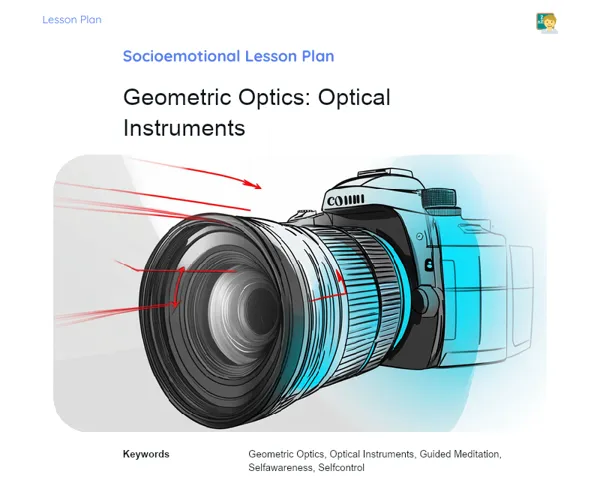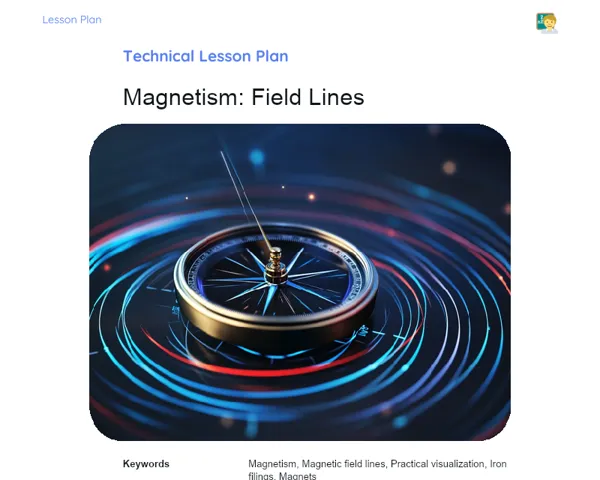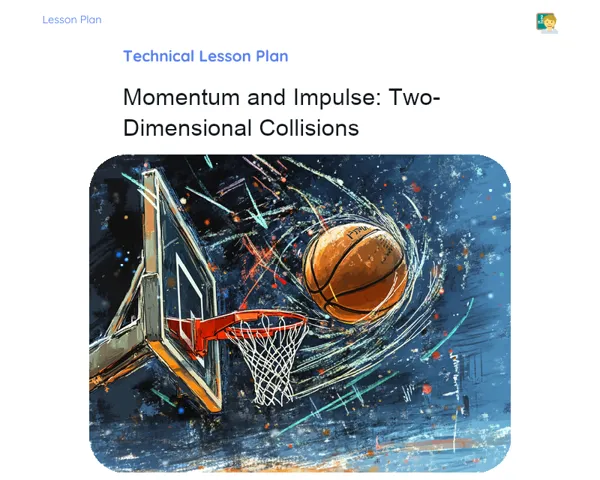Lesson Plan Teknis | Convex and Concave Mirrors: Gauss's Equation
| Palavras Chave | Gaussian equation, Concave mirrors, Convex mirrors, Focal length, Linear magnification, Optics, Engineering, Car headlights, Telescopes, Vehicle side mirrors, Theoretical calculations, Practical experiments |
| Materiais Necessários | Concave mirrors, Convex mirrors, Rulers, Graph paper, Flashlights, Calculators, Projector or TV for video demonstrations, Computer with internet access, Materials for note-taking (paper and pen) |
Objective
Duration: 15 - 20 minutes
The aim of this section is to ensure that students thoroughly comprehend the fundamental concepts tied to the Gaussian equation and its use in concave and convex mirrors. This understanding is vital for honing practical skills that are in high demand in the job market, especially in optics and engineering fields. By mastering these concepts, students will be more equipped to carry out precise calculations and tackle real-world problems they may face in their future careers.
Objective Utama:
1. Grasp the Gaussian equation and its relevance to concave and convex mirrors.
2. Calculate the distance between images and mirrors using the focal length.
3. Figure out the linear magnification in systems involving concave and convex mirrors.
Objective Sampingan:
- Recognize the distinctions between concave and convex mirrors and their practical uses.
Introduction
Duration: 15 - 20 minutes
The objective of this section is to ensure that students firmly grasp the basic concepts associated with the Gaussian equation and its application in concave and convex mirrors. Such understanding is crucial for fostering practical skills that hold significant value in the job market, particularly within optics and engineering fields. By internalizing these concepts, students will be equipped to make accurate calculations and resolve practical challenges they will encounter in their careers.
Curiosities and Market Connection
Concave mirrors, for example, are used in telescopes for capturing images of far-off celestial objects, while convex mirrors are frequently found in vehicle side mirrors, offering a broader and safer view of the surroundings. Professionals in sectors like optical engineering, automotive design, and safety technology often rely on the Gaussian equation to design and enhance these products.
Contextualization
Concave and convex mirrors play an essential role in our daily lives, appearing in car headlights, makeup mirrors, and even telescopes. The Gaussian equation serves as a key mathematical tool that helps us understand and predict how these mirrors form images. This knowledge is crucial for numerous practical applications and technological advancements.
Initial Activity
Provocative Question: How do you think the design of car mirrors allows for a wider view of traffic? Short Video: Present a 3-4 minute video illustrating the role of mirrors in various technologies, such as telescopes and security cameras.
Development
Duration: 60 - 70 minutes
The aim of this segment is to enable students to solidify their comprehension of the Gaussian equation and its practical use in concave and convex mirrors. Through engaging activities and applied challenges, students will get the chance to apply theoretical knowledge in real scenarios, acquiring valuable skills for their future careers.
Topics
1. Understanding the definition and characteristics of concave and convex mirrors
2. Utilizing the Gaussian equation for spherical mirrors
3. Calculating the distance between the image and the mirror
4. Determining the focal length
5. Understanding linear magnification in spherical mirrors
Thoughts on the Subject
Encourage students to reflect on the significance of concave and convex mirrors in various practical applications. Pose questions about how comprehension of the Gaussian equation can be beneficial in solving real-life problems and fostering technological innovations. Prompt them to consider the consequences of lacking this understanding and its potential impact on the development of optical devices.
Mini Challenge
Mini Challenge: Building a Mirror System
Students will construct a mirror system using basic materials and apply the Gaussian equation to calculate the positions of the images that are formed.
1. Divide students into groups of 4-5 participants.
2. Distribute materials such as concave mirrors, convex mirrors, rulers, graph paper, and flashlights.
3. Each group must select a type of mirror (either concave or convex) and determine the focal length by projecting an image of a distant object.
4. Using the Gaussian equation (1/f = 1/p + 1/q), each group must place an object in front of the mirror and calculate the position of the image (q) that is formed.
5. Students should then experimentally verify the image position and compare it with their theoretical calculations.
6. Each group will document their findings and prepare a brief presentation detailing the steps taken and conclusions drawn.
Apply the Gaussian equation in a practical context and confirm the accuracy of theoretical calculations against experimental results.
**Duration: 35 - 40 minutes
Evaluation Exercises
1. Calculate the image position for an object placed 15 cm from a concave mirror with a focal length of 10 cm.
2. A convex mirror has a focal length of 20 cm. Determine the image position of an object that is 30 cm from the mirror.
3. An object is situated 25 cm from a concave mirror, with the image formed 50 cm from the mirror. What is the focal length of the mirror?
4. A convex mirror creates an image of an object 10 cm away from the mirror. If the focal length is 15 cm, where is the object positioned?
5. Calculate the linear magnification of an object 5 cm tall located 10 cm from a concave mirror with a focal length of 8 cm. Where will the image be situated and what will its height be?
Conclusion
Duration: 10 - 15 minutes
This stage is aimed at consolidating the knowledge acquired throughout the lesson, reflecting on its practical implications and significance in everyday life and professional setups. It also seeks to foster an exchange of experiences and knowledge, enhancing both theoretical and practical understanding of the discussed concepts.
Discussion
Encourage a discussion among students regarding the concepts learned, asking them to share their insights from the mini-challenge and any challenges they faced. Inquire about how understanding the Gaussian equation and distinguishing between concave and convex mirrors can be applied in real-world situations, such as in the design of optical equipment or security systems. Prompt students to contemplate the importance of both practical and theoretical skills in the job market.
Summary
Recap the core topics covered in the lesson, including the definition and characteristics of concave and convex mirrors, the Gaussian equation, and the calculations pertaining to distance between images and mirrors, as well as linear magnification. Emphasize the need for correlating theory with practice to address real problems.
Closing
Discuss how this lesson bridged theory, practice, and application. Stress that understanding these optical attributes is fundamental across various technological and scientific domains, such as optical engineering, security, and astronomy. Highlight that the skills gained are highly regarded in the job market and vital for driving technological progress.



